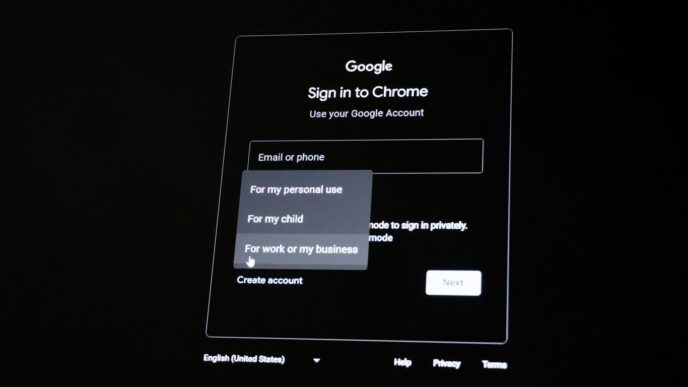Artificial intelligence, or AI, is everywhere these days. It’s not just something from sci-fi movies anymore; it’s a real part of our daily lives, often without us even realizing it. From the moment we wake up and ask our smart speaker about the weather to when we’re driving home with navigation helping us out, AI is doing a lot behind the scenes. This article will go through 10 examples of artificial intelligence that are really changing how we live and work.
Key Takeaways
- AI is becoming a common part of everyday life, helping with tasks like driving and using smart devices.
- Many familiar products and services, like voice assistants and online learning platforms, use AI.
- AI helps automate tasks, personalize experiences, and make things more efficient in various fields.
- The use of AI is growing fast, with new applications showing up all the time.
- Understanding how AI works in these real-world examples helps us see its impact.
1. Self-Driving Cars
Self-driving cars are no longer a thing of science fiction; they’re actively being developed and tested on our roads. It’s kind of wild to think about, right? The idea is that these vehicles use a combination of sensors, cameras, radar, and, of course, artificial intelligence to navigate roads without human intervention.
Think about the potential benefits. Fewer accidents because computers don’t get distracted or tired. Reduced traffic congestion because intelligent traffic management systems can optimize routes in real-time. And increased mobility for people who can’t drive themselves. It’s a pretty big deal.
Here’s a quick look at some of the technologies involved:
- Computer Vision: Allows the car to "see" and interpret its surroundings.
- Sensor Fusion: Combines data from multiple sensors for a more complete picture.
- Path Planning: Determines the optimal route to the destination.
Of course, there are challenges too. Ethical considerations, like who is responsible in case of an accident. Technical hurdles, like dealing with unpredictable weather conditions. And regulatory issues, like establishing clear rules for autonomous cars on public roads. But the progress is undeniable, and it’s exciting to see where this technology will take us.
2. Siri

Okay, so everyone knows Siri. It’s that voice assistant on your iPhone that you either love or hate. I remember when it first came out, it felt like something out of a sci-fi movie. Now, it’s just… there. But it’s still a pretty big deal when you think about it.
Siri uses natural language processing (NLP) to understand what you’re saying. It’s not perfect, of course. We’ve all had those moments where Siri completely misunderstands a simple request. But it’s gotten way better over the years. Apple is constantly working on improving Siri’s capabilities, and it’s a key part of their whole ecosystem. They’re even looking into on-device innovation to make it faster and more private.
Think about all the things you can do with Siri:
- Set alarms
- Send texts
- Play music
- Get directions
It’s basically a hands-free way to interact with your phone. And it’s not just on iPhones anymore. You can find Siri on iPads, Macs, Apple Watches, and even the HomePod. It’s everywhere! I use it mostly for setting timers when I’m cooking, but I know some people who use it for everything. It’s pretty wild how much we rely on these AI assistants now.
3. Alexa
Okay, so Alexa. We all know Alexa. It’s that little cylinder (or sphere, depending on which one you bought) that sits on your counter and listens to everything you say. But seriously, it’s more than just a glorified timer. It’s a pretty sophisticated piece of AI that’s become super integrated into our lives. I mean, how many times a day do you ask it something? I know I’m guilty of asking it to play music, set reminders, and even tell me jokes (though, let’s be honest, the jokes are usually pretty bad).
Alexa uses natural language processing (NLP) to understand what you’re saying and then perform the action you requested. It’s pretty wild when you think about it. It’s not perfect, of course. Sometimes it misunderstands me completely, especially when I’m mumbling or there’s background noise. But overall, it’s gotten way better over the years. I remember when it first came out, it was kind of clunky and didn’t understand half of what I said. Now, it’s actually pretty reliable.
One of the coolest things about Alexa is its ability to connect to other smart devices in your home. You can control your lights, thermostat, and even your coffee maker with just your voice. It’s like living in the future! Of course, there are some privacy concerns that come with having a device that’s always listening, but that’s a whole other can of worms. But if you are looking for a voice assistant to help you with daily tasks, Alexa is a solid choice.
4. Amazon Rekognition
Okay, so Amazon Rekognition. It’s basically Amazon’s image and video analysis service. Think of it as a super-powered computer vision tool. It can identify objects, people, text, scenes, and activities in images and videos. It’s pretty wild what it can do. I remember when I first heard about it, I was like, "Wow, that’s some serious tech!"
One of the coolest things about Rekognition is its ability to perform facial recognition. It can identify faces, analyze facial attributes like age range and emotions, and even compare faces to verify identities. This has some pretty big implications for security and identity verification.
For example, you can use Amazon Rekognition to speed up identity verification projects. It’s also used by law enforcement agencies and cybersecurity firms for facial recognition, surveillance and threat detection.
Here’s a quick rundown of some of its capabilities:
- Object and Scene Detection: Identifies thousands of objects and scenes.
- Facial Analysis: Detects faces and analyzes attributes like age, gender, and emotions.
- Text Detection: Extracts text from images and videos.
- Content Moderation: Detects inappropriate or offensive content.
I think it’s important to remember that AI is only as powerful and intelligent as the data used to train it. The accuracy, speed, and effectiveness of the technology are only as good as the data it is trained on, so it is essential to make sure the data is reliable and accurate.
5. Facebook Messenger
Facebook Messenger, which most of us use daily, has quietly integrated AI in several ways. It’s not just about sending messages anymore; it’s becoming a smart communication hub. I remember when Messenger was just a simple chat app, now it’s doing all sorts of things behind the scenes.
One of the coolest things is how Messenger uses AI for message automation. Businesses can use chatbots to answer common questions, provide customer support, and even process orders. It’s like having a virtual assistant available 24/7. I’ve personally used these chatbots to track packages and get quick answers without having to wait for a real person.
Here are some ways AI is used in Facebook Messenger:
- Chatbots for Customer Service: AI-powered chatbots handle routine inquiries, freeing up human agents for more complex issues.
- Spam and Fraud Detection: AI algorithms analyze messages to identify and filter out spam and fraudulent content, keeping users safe.
- Language Translation: Messenger can automatically translate messages in real-time, making it easier to communicate with people who speak different languages.
It’s pretty amazing how much AI is changing the way we communicate. I wonder what new features they’ll add next!
6. DeepMind Lab
DeepMind Lab is basically a virtual playground for AI. Think of it as a 3D video game environment designed specifically for training AI agents. Instead of teaching an AI to play a specific game, DeepMind Lab aims to create agents that can learn general problem-solving skills. It’s a pretty cool concept, and it’s had some interesting results.
DeepMind, owned by Google, created this platform to push the boundaries of what AI can do. The goal is to develop AI that can learn and adapt in complex, unpredictable environments, much like humans do. It’s not just about winning a game; it’s about building adaptable intelligence.
DeepMind Lab offers a variety of environments and tasks, from simple navigation to complex puzzle-solving. This allows researchers to test different AI algorithms and see how well they perform in different situations. It’s a great way to experiment and see what works and what doesn’t. Plus, it’s all done in a safe, virtual space, so there’s no risk of real-world consequences.
One of the key things about DeepMind Lab is that it encourages AI agents to learn through trial and error. They’re given a goal, but they have to figure out how to achieve it on their own. This is similar to how humans learn, and it can lead to some pretty impressive results. For example, agents have learned to navigate complex mazes, collect rewards, and even cooperate with each other.
It’s worth noting that DeepMind Lab has contributed to advancements in other areas of AI research. The techniques developed in the lab have been applied to real-world problems, such as robotics and AI in Education. It’s a testament to the power of virtual environments for training AI.
7. Go Player Ke Jie
Okay, so this one is pretty cool. Remember when computers started beating humans at chess? Well, Go is a whole different beast. It’s way more complex, with a massive number of possible moves. For a long time, it was thought that AI wouldn’t be able to master it anytime soon. Then came DeepMind’s AlphaGo.
AlphaGo took on Ke Jie, who was the world’s top-ranked Go player at the time. And, well, AlphaGo won. It wasn’t just a win; it was a pretty decisive victory. This event was a huge moment, showing just how far AI had come in terms of strategic thinking and problem-solving. It wasn’t just about brute force calculation; AlphaGo seemed to be making moves that were creative and insightful, much like a human player.
It really made people rethink what AI could do. It wasn’t just about crunching numbers anymore; it was about learning, adapting, and even innovating. It’s interesting to see how AI is being used in retail to improve customer experiences. AI in retail is changing how we shop, and it’s only going to get more advanced from here.
8. Coursera
Coursera has really changed the game when it comes to online learning. It’s not just some random collection of videos; it’s a full-blown platform offering courses, Specializations, and even degrees from top universities and institutions around the world. I remember when I first heard about it, I was skeptical. Could you really learn something substantial online? Turns out, absolutely.
What sets Coursera apart is its focus on quality and collaboration. The courses are designed by actual professors and experts in their fields, and they often include interactive elements like quizzes, projects, and discussion forums. This means you’re not just passively watching lectures; you’re actively engaging with the material and with other learners. It’s like being in a real classroom, but from the comfort of your own home.
I think the best part is the flexibility. You can learn at your own pace, on your own schedule. Whether you’re a busy professional looking to upskill or a student wanting to explore a new subject, Coursera has something for everyone. Plus, the certificates and degrees you can earn can actually make a difference in your career. It’s a great way to show employers that you’re committed to learning and growing. It’s a great way to find personalized teaching resources AI innovations in higher education.
Here’s a quick rundown of some of the things you can find on Coursera:
- Individual Courses: Perfect for learning a specific skill or topic.
- Specializations: A series of related courses designed to help you master a particular area.
- Professional Certificates: Industry-recognized credentials that can boost your career.
- Degrees: Full online degree programs from top universities.
It’s pretty amazing how much education has changed, and Coursera is definitely at the forefront of that change.
9. Udemy
Udemy is another massive online learning platform, and it’s pretty cool because it’s so open. Anyone can create and sell a course, which means you get a huge variety of topics and teaching styles. I remember when I first started looking into coding, I found a bunch of Udemy courses that were way cheaper than going back to school. It’s not always the most polished stuff, but you can find some real gems if you dig around. Plus, they always seem to have sales going on.
Udemy uses AI in a few ways, mostly to help students find relevant courses and to give instructors feedback on their course content. It’s not as in-your-face as some of the other AI applications, but it’s definitely working behind the scenes to make the learning experience better. For example, their recommendation engine is powered by AI, suggesting courses based on your past activity and what other students with similar interests have taken. It’s like Netflix, but for learning new skills. I’ve even seen some courses that teach you how to detect AI manipulation, which is pretty meta when you think about it.
Here’s a quick rundown of what makes Udemy stand out:
- Huge course selection: Seriously, they have everything.
- Affordable prices: Especially when you catch a sale.
- Instructor variety: From total beginners to seasoned pros.
10. Edx

Edx is another big player in the online learning world, and it’s been around for a while. I remember when it first launched; everyone was talking about it. It’s similar to Coursera and Udemy, but it has its own unique flavor. Edx partners with universities and institutions to offer courses, and a lot of them are actually free to audit.
Think of it as a way to get a taste of what it’s like to take a class at Harvard or MIT without actually having to go there (or pay their tuition!). They also have professional certificate programs and even full master’s degrees, so you can really level up your skills if you’re serious about it. I know a few people who’ve used Edx to switch careers, and they’ve had some pretty good success. It’s definitely worth checking out if you’re looking to learn something new or boost your career.
Here’s a quick rundown of what Edx brings to the table:
- Partnerships with top universities: This means you’re getting quality content.
- Variety of subjects: From computer science to humanities, they’ve got a lot to pick from.
- Affordable options: Auditing courses is free, and even the paid options are usually cheaper than traditional college.
Conclusion
So, we’ve looked at a bunch of ways AI is showing up in our lives, right? It’s pretty clear this stuff isn’t just for sci-fi movies anymore. From helping doctors figure out what’s going on with patients to making our phones smarter, AI is doing a lot. It’s changing how we work, how we learn, and even how we just chill out. It’s a big deal, and it’s only going to get bigger. We’re really just at the start of seeing what AI can do, and it’s going to be interesting to watch it keep growing and changing things around us.
Frequently Asked Questions
What exactly is AI?
AI, or Artificial Intelligence, is like teaching computers to think and learn. They can use information to make smart choices, just like people do. This helps them do cool things like understand what you say or drive cars by themselves.
Where can we see AI in action today?
AI is already a big part of our daily lives! Think about your phone’s smart assistant, the movies suggested to you online, or even how some cars can park themselves. AI is working behind the scenes in many places.
How can AI make our lives better?
AI can help us in many ways. It can make tasks faster and easier, like helping doctors find sicknesses earlier or making online shopping better for you. It can also help create new inventions and improve how things work.
Are there any downsides to AI?
While AI is amazing, there are some things to think about. We need to make sure AI is used fairly and doesn’t take away too many jobs. Also, we have to be careful about how much personal information AI systems collect and keep it safe.
How can I learn more about AI?
Learning about AI is easier than you might think! There are lots of free online classes from places like Coursera and Udemy. You can also find many videos and podcasts that explain AI in simple terms.
What does the future hold for AI?
AI is always getting better and will likely change even more things in the future. It could help us solve big problems like climate change or make new discoveries in science and medicine. The possibilities are huge!














